6 Creative Work Email Tips: Get Your Signature Right

Table of Contents
- Importance of a Good Email Sign-off
- Email Sign-off Rules You Need to Know
- 6 Email Sign-offs That Never Fail
- Key Takeaways
- Conclusion
- FAQs
One of the most significant work email tips you will ever encounter is giving importance to your email sign-offs. While they may seem insignificant to you, email sign-offs leave a lasting impression on your email reader.
As crucial as it is to create a well-crafted message and include a clear call to action in the body of your email, paying equal attention to how you end an email will determine how quickly the recipient will respond to your email. Bad or hastily written email sign-offs might even lead to no response at all. Carefully crafted email sign-offs set your message apart from the regular clutter in the recipient’s inbox.
Importance of a Good Email Sign-Off
Before we learn more about the creative ways to sign-off an email, we must understand the importance of an email sign-off. It is important to add value through the body of the email, but your introduction and salutations in an email are of equal importance. They, too, add value to your message.
Even though you would love to end your email on a personal note or sound cool with the salutation you use, professional emails follow some general writing rules and adhere to the informal style. Your message will be taken seriously or considered when your greeting is appropriate and in tune with the rest of the text in the email. The way you sign off an email sets the overall tone of your email. It can either boost or impair your response rate.
If you do not have a clear CTA within the body of the email, you can use one while writing the sign-off. A short and clear phrase works as a great CTA. It will compel your email recipient to take any action or respond to the email appropriately. Sign-offs are a great way to draw the reader’s attention towards what you want to say through your email. The more your email gets noticed, the better chances you have of receiving a reply to it.
You might have written a clear message and streamlined your writing in the email. The introduction could be just perfect, and the body of the email could have a clear CTA, but if you end it loosely or half-heartedly by using a wrong sign-off, the final impression of your email on the recipient is negative. An improper sign-off can make or break the purpose of your email, quite literally.

Email Sign-off Rules You Need to Know
You cannot just choose an email sign-off word or phrase based on your whim. It is important to consider the context and nature of your email and the message you intend to convey. Here are a few rules that you need to know while choosing the right way to end your email.
1. Tone and intent of your message
While choosing a sign-off, context is key. Determine the context of your email. And notice the tone of the text in the body of your email. You might very well want to use ‘Ciao’ to end your email, but it will be a misplaced word when you are sending an extremely formal message. Your sign-off should be in tune with the tone and intent of the email.
2. Include your name, if required
Some emails require you to add your name to the sign-off, especially in your first correspondence with a recipient. Many people these days replace their names with an automatic email signature.
3. Check grammar
One of the important email work tips and the proper mannerisms to write and send an email includes checking the grammar of your email text. This refers not only to the body of the email but also to the subject line, introduction, and sign-off.
4. Who is the recipient?
You need to understand your relationship with the recipient to choose the most appropriate way to end your email. Do you have a formal or informal equation with the person receiving the email? Are they your friend, family, colleague, employer, employee, customer, senior, etc.?
5. Show that you are putting in the effort.
Do not always stick to a single sign-off word or phrase. If you use the same overused sign-off each time in your email communications, you will come off as a lackluster individual unwilling to put in time and effort into writing an email: mix things up, try new sign-offs, be impressionable through your emails.
6 Email Sign-offs That Never Fail
Emails are one of the most crucial methods of communication within and outside the workplace. Therefore, having proper knowledge of each element of an email and employing them correctly is important. Let’s take a look at some of the popular ways to sign-off an email.
1. Regards
One of the most widely used email sign-offs is “regards.” It can also be written as best regards. While closing formal emails, regards or best regards is a highly suitable phrase to use. It is ideally used for initial email communication, especially when you have not yet established a rapport with the recipient of your email. It is used in several variations. Depending on the purpose and context of the email being sent, it could be written as warm regards, kind regards, kindest regards, etc.
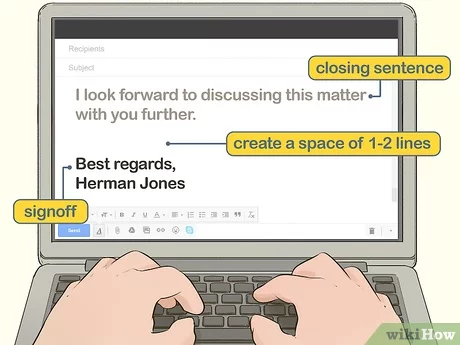
Many people use abbreviations in an email, and regards takes the form of Rgds. Avoid such abbreviations at all costs. An abbreviated sign-off lends a rather informal tone to your email, at times defeating the very purpose of a professional message. It might also come off as proof of your laziness or treating work communication too casually. After all, Rgds is only two letters short of regards and sounds incomplete and absurd.
Regards is a good way of ending your formal emails as it does not set any expectations. If you do not know the recipient at all and want to sound friendly, using best regards would be a better choice. If you do not want to sound too friendly and want to remain polite at the same time, use warm regards as a sign-off. Although regards is a safe way to end your emails, you must keep in mind the context of the email before writing a sign-off.
2. Sincerely
We all are well aware of the word “sincerely.” It has a wide application ranging from school leave applications, letters used for official communication to emails. Sincerely is mainly used as a cover letter sign-off. One of the important work email tips that you should be aware of – especially if email marketing is part of your promotional mix or a primary medium for you to reach out to potential clients and business partners – is the working knowledge of the term sincerely.
Just because it is one of the common ways to end an email, you cannot supplant each email with sincerely as the sign-off phrase. Sincerely best fits a formal correspondence. It is polite and nice at the same time. Its variations are sincerely, yours sincerely, and sincerely yours.
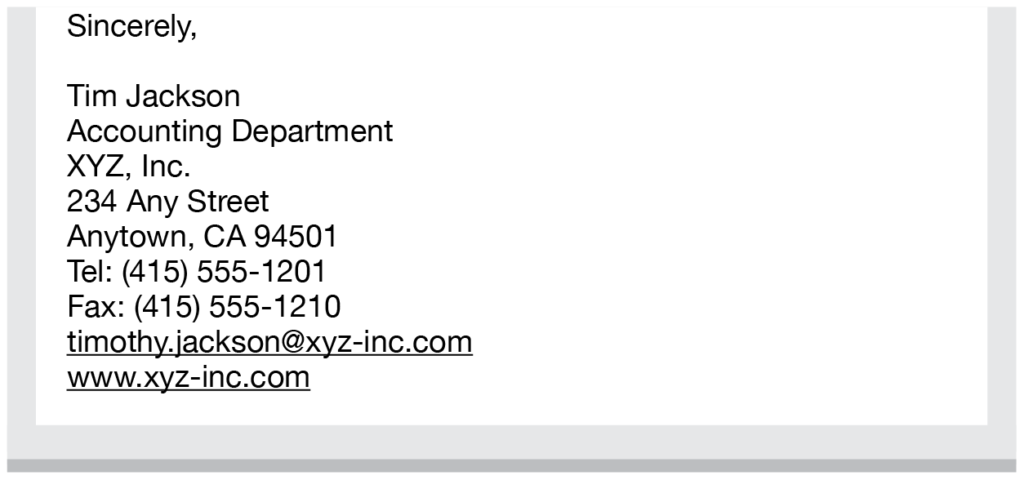
Signing an email with sincerely is suitable for people you do not regularly communicate with. Apart from cover letters, they can also be used in email proposals. But in case you are a small business, there is a slight chance that the word sincerely may come off as a little stuffy. Ideally, a small business should choose a little less formal sign-off for their email communication. The phrase ‘yours sincerely’ is widely seen as too formal a sign-off.
3. Cheers
While many people are afraid to use “cheers” as a sign-off in their professional emails, with the right knowledge, you can pull it off successfully. Cheers has a bright and cheerful vibe to it. It is fresh in its tone and hints at a dash of enthusiasm. Since it is one of the casual email sign-offs, you can use cheers in emails to people you know well. They could be your colleagues or external collaborators with whom you enjoy a friendly rapport. There are no other variations to cheers.
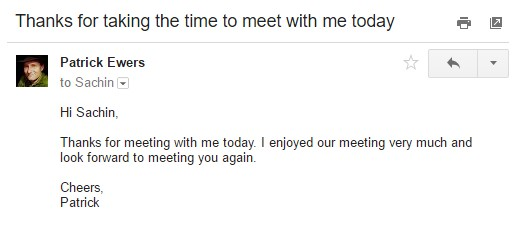
Use it when it suits the purpose or intent of your message. Unnecessarily adding cheers to the last line of your email might sound a little pretentious. Cheers has been noted to get a quicker and more effective response to emails. Make sure your email body is friendly and conversational before adding cheers at the end of your email. It is not advisable if you are sending an email to a collaborator for the first time.
4. Thanks in advance
A great phrase that serves both as a casual email sign-off and a professional email sign-off is “thanks in advance.” It is polite and crisp. You can use this for personal and professional emails. Thanks in advance simply stands for thanking someone in advance for what you have asked or requested from them in the preceding email. More simply, you are expressing your gratitude to the email recipient in advance.
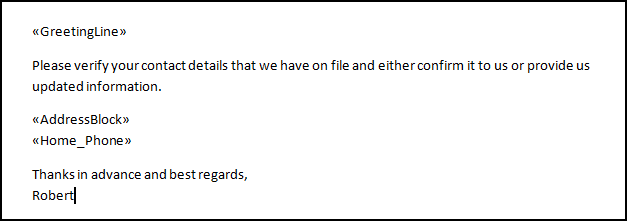
The expanded variation of thanks in advance is thank you in advance. While using this one as a sign-off, try to sound undemanding in your email as much as possible. Instead, take the opportunity to thank the recipient. This makes the recipient feel that they would gladly like to help you instead of being forcefully obliged to help you. Thanks in advance tends to set a certain expectation. Thanks in advance is basically = gratitude + expectations. And it has proven to generate high response rates. But a word of caution, use it wisely!
5. I appreciate your help, input, feedback, etc.
With “I appreciate your help, feedback, or input,” you are taking gratitude to an even higher level. If the email recipient has done something for you that is significantly important to you, use this phrase to emphasize how much you appreciate their action.
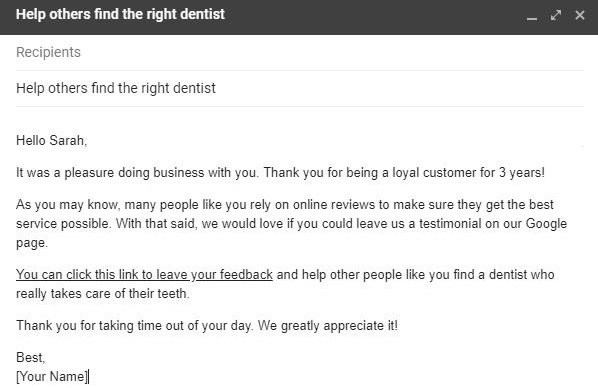
The “I appreciate you” feedback phrase is a great way to sign off an email. If your email requests customer feedback specifically, using this phrase is the most suitable sign-off to use in that email.
“I appreciate you” has three variations – “I appreciate your help,” which thanks and states the importance of the recipient’s help. The second one is “I appreciate your input or suggestion,” and the third is “I appreciate your feedback.” In case you want to appreciate the effort or response of the recipient in general and not particularly in terms of help, feedback or suggestion, you can simply use “I appreciate it” or “I greatly appreciate it,” followed by an exclamation mark. Some of the new and advanced variations of the I appreciate phrase are
- With thanks and appreciation
- Your help is greatly appreciated
- Even if you can’t help, I appreciate your effort
- I sincerely appreciate your help with the project/campaign
- I appreciate your opinion
Appreciating the reader is a wonderful way of initiating an email communication thread. It can be used for both formal and informal emails.
6. Best wishes
“Best wishes” is a good and neutral phrase amongst the several ways you can use to end your email. There is nothing unexpected about the words best and wishes. It is a commonly used closing line. Whether you write follow-up emails, business letters, semi-formal messages to colleagues, or strictly professional emails to new collaborators, you can safely use the best wishes phrase.
One of the popular variations of best wishes is “warm wishes.” Since many people use best wishes as a sign-off, the familiarity makes it seamless. Though it is safe to end your emails, it can often come off as dull and overused. Nonetheless, it is a cheerful way to sign-off an email.
Best wishes carries just the right amount of friendliness and the required minimum of a formal tone. It is a popularly acceptable sign-off phrase. It might sound too much like a line out of a greeting card, but if you are unsure about the tone or your relationship with the recipient, best wishes is one of your best bets as a sign-off phrase. Check the overall tone of your email and use best wishes or warm wishes as it suits the purpose of your email.
Many people also use “best” as a shorter version of best wishes. But just the word best is more of a colloquial word than a proper email sign-off phrase.
Key Takeaways
- Email sign-offs leave a lasting impression on the one who is reading your email.
- The way you sign off an email sets the overall tone of your email. It can either boost or impair your response rate.
- An improper sign-off can make or break the purpose of your email, quite literally.
- While closing formal emails, regards or best regards is a highly suitable and common phrase to use. It does not set any expectations and is polite in its tone at the same time.
- Abbreviating sign-offs like Rgds should be avoided at all costs.
Conclusion
Now that you have already acquired the knowledge of a few creative and great ways to end an email, it is also important that you know what not to use as the closing line of your email. Another milestone on the list of work email tips is avoiding a few sign-off phrases no matter what. Do not use,
- Thx
- Respectfully yours or respectfully
- [nothing at all in the closing line]
- Have a blessed day
- Default email signatures like “sent from my iPhone.”
FAQs
Some of the ways in which you can end a professional email include using words and phrases like “best,” “sincerely,” “thank you,” “warm wishes,” “with gratitude,” “many thanks,” “kind regards,” etc. as a sign-off phrase.
A sign-off or a closing phrase is a word or phrase used before the signature. It indicates farewell or shows respect and regard for the message recipient. It also hints at the ending of the content of a message.
Instead of using “have a nice day” as your sign-off phrase, you can write “have a great day,” “have a wonderful day,” “have a good time,” “have a lovely day,” “have a good one,” “all the best,” etc.
The word sincerely stands for an emotion proceeding from genuine feelings or beliefs. It is a commonly used sign-off phrase in emails and can be written as – yours sincerely, sincerely yours, or simply as sincerely.
“Regards,” or “best regards” is a popular email sign-off. But in case you want to use new or more advanced forms of sign-offs in its place, you can use “with gratitude,” “best,” “thanks,” “take care,” “with sincere appreciation,” “yours truly,” etc.
Latest Blogs
Explore how Google’s 2025 AI search updates triggered ranking chaos. Learn actionable strategies to adapt your SEO for AI Overviews, zero-click searches, and SERP volatility. Stay ahead now.
Learn how to rank on AI search engines like ChatGPT, Perplexity, and Gemini by optimizing your content for authority, structure, and relevance. Stay ahead in AI-driven search with this strategic guide.
Explore the best healthcare SEO services for your medical practice. Improve online visibility and effectively reach more patients in need of your services.
Get your hands on the latest news!
Similar Posts

Email Marketing
6 mins read
11 Tips to Design Impactful Email Banners

Design
9 mins read
7 Benefits of a Simple Mailer Design

Email Marketing
7 mins read